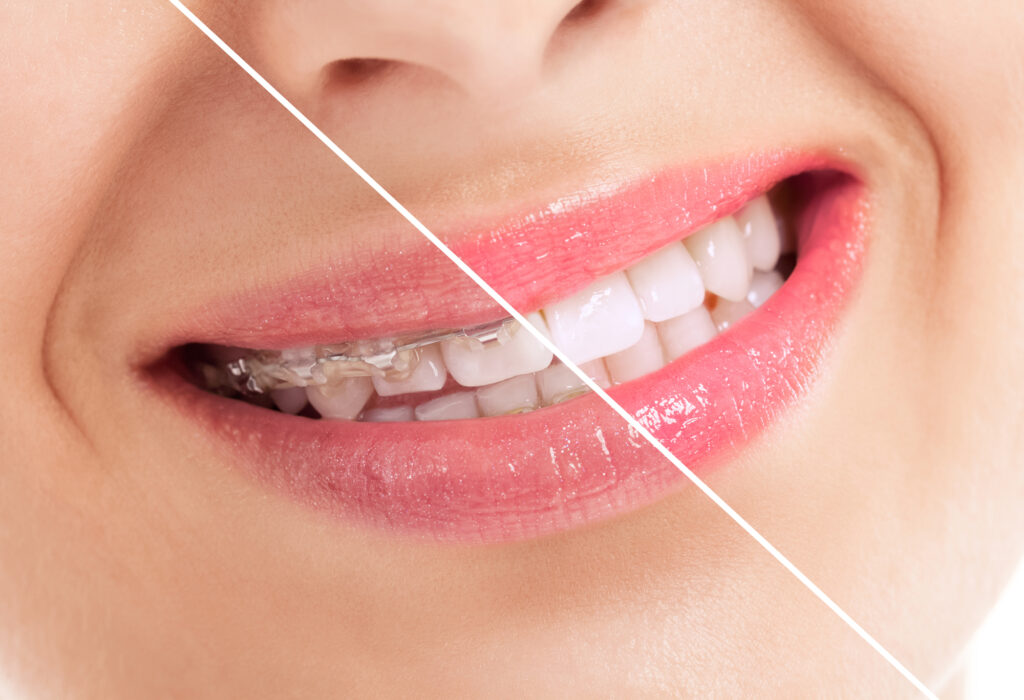
When it comes to achieving a perfectly aligned smile, the decision between Invisalign and traditional metal or ceramic braces can be a significant one. Each option comes with its own set of benefits and considerations, catering to different needs and preferences. In this article, we’ll explore the differences between Invisalign and metal and ceramic braces, helping you make an informed decision about which orthodontic treatment is right for you.
Invisalign: The Invisible Solution
Invisalign has revolutionized the field of orthodontics with its clear aligner technology. Instead of using brackets and wires like traditional braces, Invisalign employs a series of custom-made, transparent aligners that gradually shift your teeth into place. This discreet and removable option appeals to many individuals who prefer a less noticeable orthodontic treatment.
One of the primary advantages of Invisalign is its virtually invisible appearance. Unlike metal and ceramic braces, which are conspicuous on the teeth, Invisalign aligners are barely noticeable, allowing users to feel more confident throughout their treatment. This feature is particularly appealing to adults and professionals who may feel self-conscious about wearing traditional braces.
Another benefit of Invisalign is its removability. Unlike braces, which are permanently fixed to the teeth, Invisalign aligners can be easily removed for eating, drinking, brushing, and flossing. This flexibility allows for greater convenience and makes it easier to maintain oral hygiene during treatment. However, it’s essential to wear the aligners for the recommended 20-22 hours per day to ensure optimal results.
Invisalign treatment typically involves fewer visits to the orthodontist compared to traditional braces, as there are no adjustments or wire changes required. Instead, patients receive a new set of aligners every few weeks, gradually progressing towards their desired smile. This can be a more convenient option for individuals with busy schedules or those who prefer less frequent orthodontic appointments.
Metal and Ceramic Braces: Traditional yet Effective
While Invisalign offers a discreet and removable option for orthodontic treatment, metal and ceramic braces remain a tried-and-true method for straightening teeth. Metal braces, consisting of stainless steel brackets and wires, have been used for decades and continue to be a popular choice among orthodontic patients. Ceramic braces, which blend in with the natural color of the teeth, offer a more aesthetically pleasing alternative to traditional metal braces.
One of the primary advantages of metal and ceramic braces is their effectiveness in correcting complex dental issues. Unlike Invisalign, which may not be suitable for severe cases of misalignment or bite issues, traditional braces can address a wide range of orthodontic problems with precision and control. This makes them a preferred choice for individuals requiring more extensive treatment.
Another benefit of metal and ceramic braces is their durability. Unlike Invisalign aligners, which are made of a flexible plastic material, braces are constructed from sturdy materials that can withstand the forces of chewing and biting. This ensures that the braces remain securely in place throughout the treatment process, providing consistent pressure to move the teeth into their proper positions.
Metal and ceramic braces will always appeal to traditionalists. For some individuals, the familiarity and reliability of braces outweigh the advantages of newer technologies like Invisalign. Additionally, metal and ceramic braces offer a fixed treatment solution, eliminating the temptation to remove aligners and potentially prolonging the duration of treatment.
Choosing the Right Option
When deciding between Invisalign and metal or ceramic braces, it’s essential to consider your individual needs, lifestyle, and treatment goals. If discreetness and flexibility are top priorities, Invisalign may be the ideal choice for you. On the other hand, if you require extensive orthodontic correction or prefer a fixed treatment solution, metal or ceramic braces may be more suitable.
Consulting with an experienced orthodontist is the best way to determine which option is right for you. Your orthodontist can evaluate your unique dental situation and provide personalized recommendations based on your specific needs and preferences. Whether you choose Invisalign or metal and ceramic braces, the ultimate goal is the same: achieving a beautifully aligned smile that enhances your confidence and oral health for years to come.




